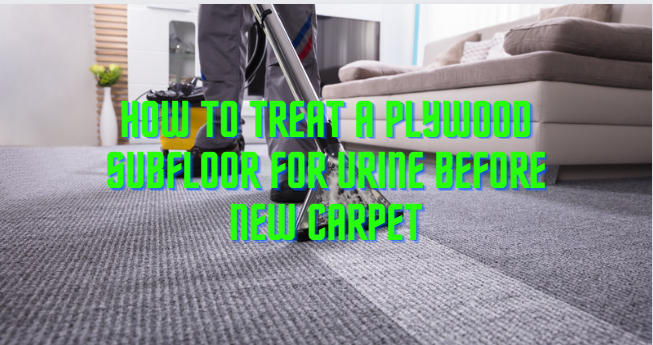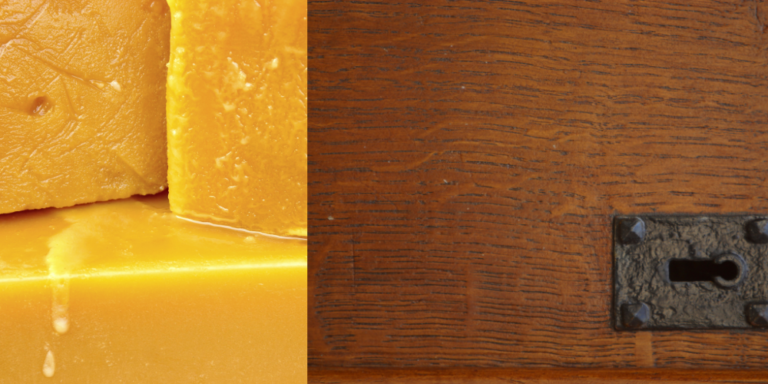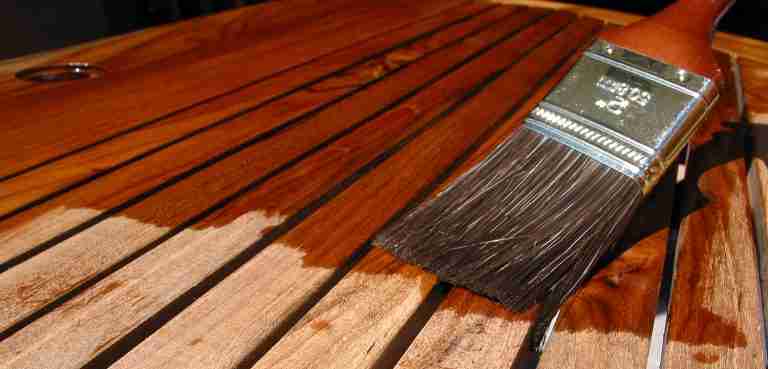How To Treat A Plywood Subfloor For Urine Before New Carpet
No matter how well behaved your pets are, there are times they end up releasing their urine on the floors. For pets that aren’t properly house trained, they stick to doing their mess at just a particular spot in the house. This ends up soaking into the floor and getting to the subfloor.
In such a case, the best option is to replace your carpet so you can treat the plywood subfloor. Urine deposited in a plywood subfloor can be treated and neutralized before placing a new carpet. In this article, we focus on how to treat a plywood subfloor for urine before new carpet.
All at a Glance
How to treat a plywood subfloor for urine before new carpet
First, identify the areas that are stained with urine after removing the old carpet. The strongly affected areas will show signs of discoloration, but if you shine a black light on the surrounding plywood subfloor, you may discover the telltale florescent shine of uric acid in other areas. Circle all those areas that need to be treated and use the steps explained below to deal with them.
- After identifying the affected area, first, clean it up with paper towels. Then, use a clean cloth to clean up the area, by blotting or dabbing it in warm soapy water. Make sure not to apply too much force on the plywood while cleaning so you won’t cause scratches on it.
- Allow some room ventilation. Open all windows or put on a fan to air out the room. The purpose is to get rid of odors and floating particles. Ventilation also helps to eliminate toxic fumes that could be produced from the cleaning solution.
- Purchase any commercial enzymatic product like Zero Odor, Nature’s Miracle, or Anti-Icky Poo. They work well to treat cat urine and dog urine on the plywood subfloor. Read the instructions on the product.
- After applying the cleaner to the plywood subfloor. Allow the cleaning solution to sit for at least a day so that the plywood can fully absorb it.
- Then, apply a subfloor sealer. Kilz 3 premium is one of the commonly stain-blocking primers to be used as floor sealers for pet urine. You can make use of any water-based or oil-based stain-blocking primer.

How to neutralize pet urine with household products
Enzymatic cleaners are good at neutralizing pet urine, most especially when the urine problem isn’t severe. Follow the steps below to neutralize pet urine.
- Use hydrogen peroxide
Hydrogen peroxide will work well for this kind of task. It is regarded as an eco-friendly wood bleaching agent and it is capable of sanitizing the plywood subfloor to eradicate pet urine completely. Apply hydrogen peroxide on a clean cloth and spread it on the stained areas on the floor.
Allow the cleaning solution to absorb the stain for about 15 to 20 minutes. You can leave it for roughly 24 hours if the stain or smell lingers. If the areas are deeply soaked in urine, you can repeat this treatment until you get your desired result.
- Use white vinegar
The acidic nature of white vinegar is effective at neutralizing alkaline ammonia which ends up eliminating the odor. It is also used for killing germs and bacteria found in dog urine. Mix 2 parts of water with 1 part of vinegar to make a solution. You can decide to just get a vinegar solution but they normally have only 5 percent vinegar in them. If the smell irritates you, add grapefruit oil or other essential oil to the solution.
These essential oils are naturally at deodorizing and removing odors. Spray the solution on the stained areas of the plywood and scrub. Use clean water to rinse the floor after scrubbing. Dry the floor with a mop or just get a wet vacuum to remove excess moisture.
- Use baking soda
Baking soda work so well at removing pet stains and urine smells. It contains a pH of more than 7 and is composed of an alkaline-crystalline powder that helps to neutralize the urine’s acidic content. This results in an odorless neutral pH state. Sprinkle ¼ cup of baking soda on the affected spots and allow it to remain there for about 24 hours.
Avoid putting too much baking soda on the spot. Then, vacuum the floor until it is clean. Alternatively, if the affected area isn’t that large, mix two tablespoons of baking soda and one cup of water in a spray bottle. Shake and mix well and then spray on the urine spot. Allow it to sit for about 10 minutes and use a dry towel to dry it.
Caution: safety is essential while dealing with these strong cleaners. Keep out of the reach of children. Wear gloves and a mask before working with them.
Also Read: Best deck stain for full sun
Will sanding the wood help in removing pet stains
Hardwood floors that have existed for a long time tend to have porous levels which means pet urine can get so absorbed into the wood and cause serious issues. In this case, sanding is your best bet. The following steps will guide you on how to do this:
- Observe the thickness of the plywood
First, determine the thickness of the plywood to see if sanding is possible. Several floors made of thin plywood sheets are not appropriate for sanding as damages can occur. Sanding shouldn’t be considered in such cases.
- Tape and sand the plywood
If the plywood passes your first test, it means it can be sanded. Open and tape down windows and doors before you start the sanding operation because it could generate dust. Make use of a drum sander if you will be sanding deeply and also use an edge sander for the subfloor plywood if the urine is near them.
- Clean the subfloor and apply stain-blocking paint
After sanding the floor, sweep the subfloor with a broom to pack the sand particles. Then, mop the floor until it is clean to touch. It is a good choice to consider applying primer paint to block pet stains and odors on the subfloor.

How to protect your subfloor from getting stained with pet urine
Pets have become part of the family that we mostly live with. You can’t kick them out even if they pee on the floor. Fortunately, there are certain things you can do to protect your subfloor from urine damage.
- Lay down pet-friendly rugs
Most pets do their stuff in a particular area of the room, especially in corners and hidden areas. You can protect your plywood subfloor from urine stains and odors by laying down washable rugs and carpets that can easily soak up urine and absorb odors. This prevents the plywood from getting stained.
- Water-proof your floor
You may consider waterproof options for your floor if you are worried about pet stains damaging your plywood. These options include tiles, stone, or waterproofed laminate floors.
This type of floor is made of a non-porous layer that prevents liquid from getting through, making it much easier to locate quickly and clean. If you have waterproof floors installed in your room and you are stuck with pet urine. Consider doing the following to deal with it.
- Wear protective gloves and then use a sponge and soapy water to clean up the area.
- Apply a commercial liquid pet odor remover to the area
- Leave it to remain there for a few minutes to have an effect
- Then, use a sponge to wipe the urine odor remover off the floor
- Rinse the floor with water. Mop and dry with a towel.
- Use a wood flooring sealant and penetrating oil
In most cases, pet urine gets soaked into floors where there is little or no sealant applied. If you applied sealant, the urine will only get absorbed into the floor and subfloor where the floor is scratched. It is a good choice to use a sealant that repels urine from getting into the floor and causing dark stains.
The recommended sealant to go for is the polyurethane sealant which is good at preventing pet urine from getting soaked to the floor. Penetrating oil that is pet friendly is also helpful in protecting your floors. Grapefruit oil work best for removing pet urine and smell, strengthening the subfloor, and making it highly resistant to pet urine. Avoid using grapefruit oil on the whole subfloor, just apply it to the affected area.
Conclusion: How To Treat A Plywood Subfloor For Urine Before New Carpet
Regular veterinary checkups for your pet may help prevent an unnecessary mess in your house. If this happens, it is advisable to treat them immediately to avoid further damage to the plywood subfloor. By the way, dried pet stains can be quite challenging to treat so you may require to hire a professional.
Treating pet stains that have sat for a long time requires some extra effort. So, it is advisable to treat them as soon as you notice to prevent leaving behind unsightly black stains.







